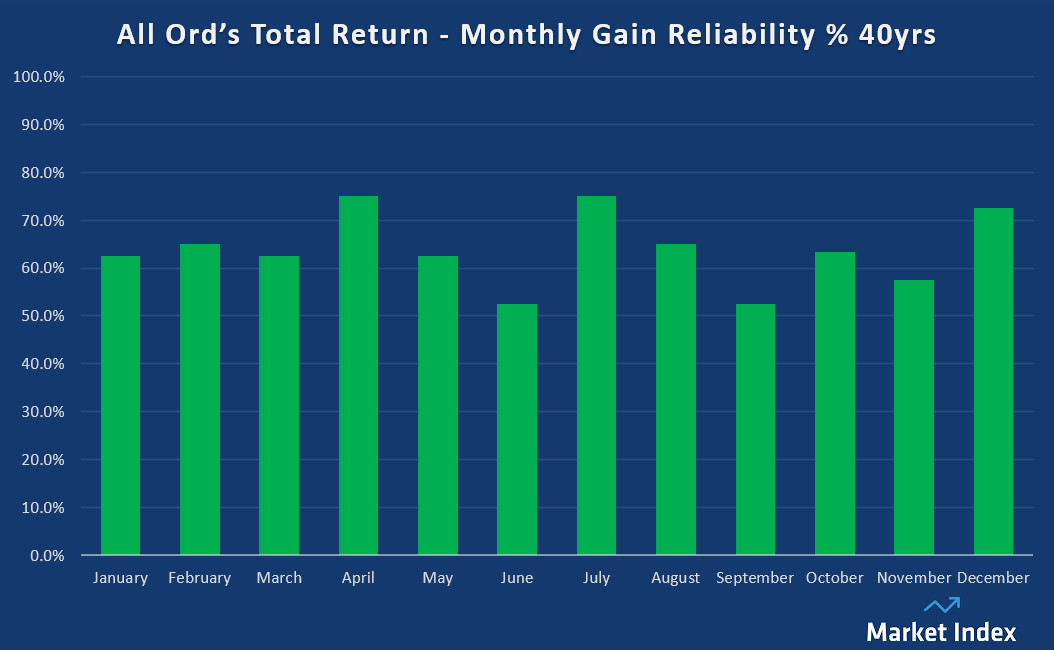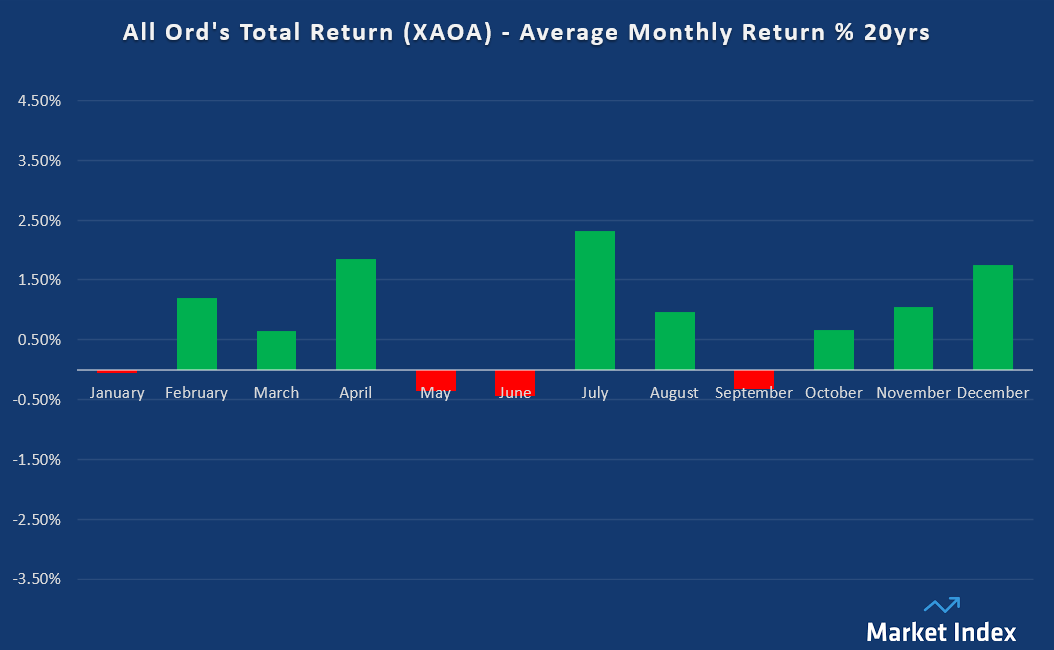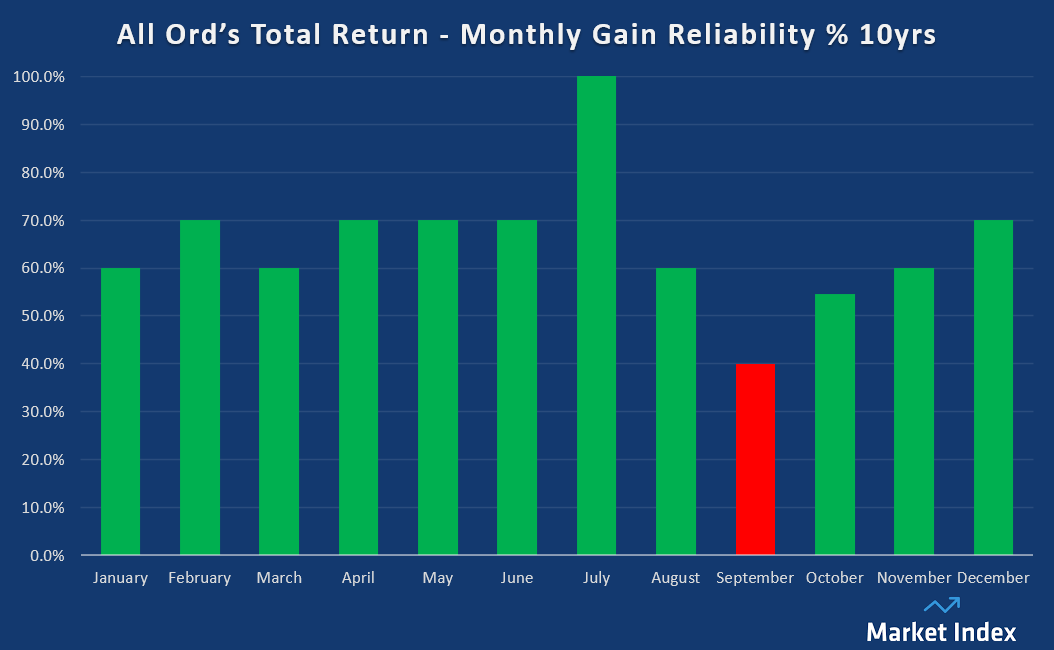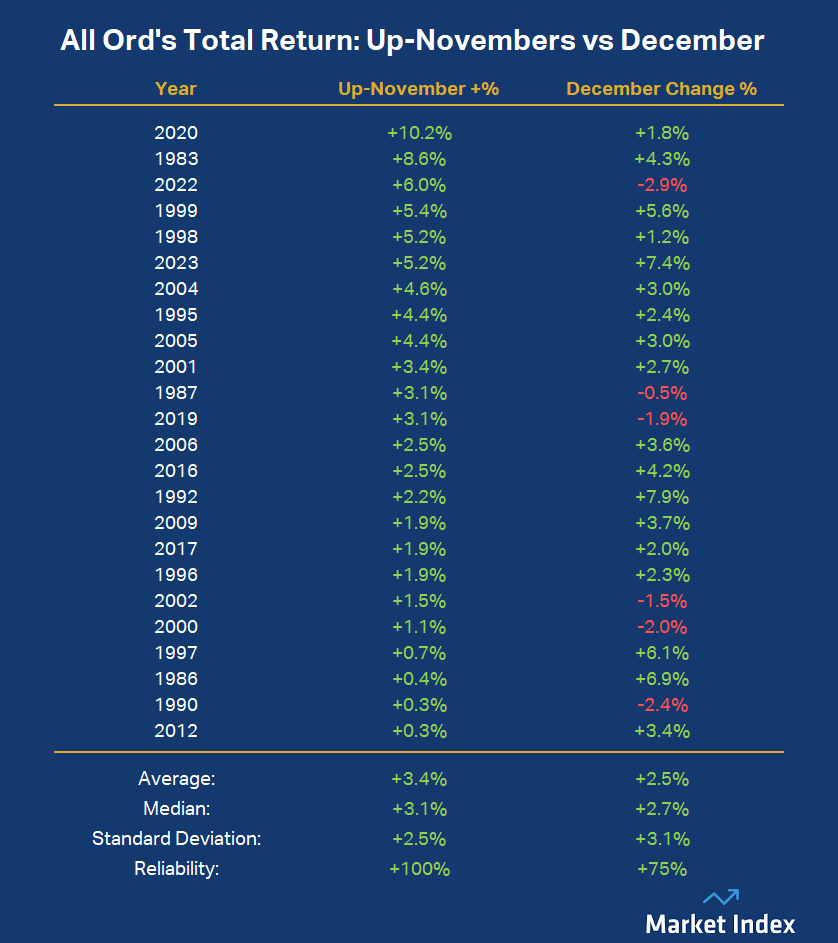Here comes Santa! Can we expect ASX shares to soar to record highs in December?
Seasonal analysis involves the study of how the price of an asset behaves at certain times of the year. It’s usually closely associated with the price movements of commodities, who’s growing and selling periods are tied to seasonal weather patterns.
Seasonality is also commonly observed in the stock market, too. This is because stocks also follow a regimented year of major macroeconomic data releases, earnings reports, and dividend payments.
I’ve been collecting seasonal data on the ASX for nearly 20 years now, and I'm proud to say you won’t see data like I’m going to show you here anywhere else. I can confirm there are several very interesting seasonal trends demonstrated by Australian stocks over the years, with perhaps the most significant, reliable, (and therefore best known) being the end of year rally.
The “Santa Claus rally” as it’s also known, describes the tendency of the Australian stock market to rise strongly between December and April. Indeed, if we look back over the last 40 years, we can see that those five months account for nearly two-thirds of our stock market’s annual gain.
You could almost say you only need to be invested in these months, i.e., buying at the end of November (now!) and selling at the end of April. The last part of this observation is the basis for the famous “Sell in May and go away” investing adage.
But here’s the standard disclaimer I put in all of my seasonal articles: Seasonal analysis is not a blueprint for markets. It is nothing more than a broad guide as to what might happen. Even if a particular seasonal pattern occurred with 100% reliability over the last 40 years, there's absolutely no guarantee it will occur next time.
So, take the data here with a grain of salt. I find seasonal data is a great tool and guide to help me navigate the markets, but I'm always attentive to when a particular seasonal trend is or isn’t going to plan.
Here comes Santa Claus!
Let’s start with the longest look-back period I consider seasonal data over, 40 years (my data actually goes back 42 years to January 1982!). All analysis shown below is conducted on the All Ordinaries Total Return Index (XAOA). The reason I prefer to use this index in my seasonal analysis is threefold:
1. The All Ordinaries index has been around for over 40 years, unlike the benchmark S&P/ASX 200 (XJO) which started in 2000, therefore I can investigate longer-term seasonal trends.
2. The All Ordinaries contains a broader representation of Australian shares, around 500 versus the XJO’s 200.
3. I only ever conduct seasonal analysis on Total Return indices, that is, those that include both capital gains and dividends. Any seasonal data you see for stocks that don't use total returns is absolutely worthless! Dividends are paid at certain times of the year, and without accounting for this, those times will show poorer performance than actual in seasonal calculations.
%20-%20Average%20Monthly%20Return%2040-yrs.%20Source%20Carl%20Capolingua.png)
Over the last 40 years, December is traditionally the third best performing month of the year for Aussie stocks with an average return of 2.1% and a median return of 2.4%. This compares to second best month July’s 2.4% and 3.0% respectively, and the best month of the year, April’s 2.5% and 2.7% respectively.
Averages and medians can be skewed by outliers, however, so I also like to consider the reliability of months to deliver a positive return. Looking at this data, December is a very reliable month compared to other months, again the third best with a 72.5% history of delivering a positive return. This compares to the equal-most reliable months of July and April at 75% reliability.

The trends over shorter look-back periods such as 20-years and 10-years shown below are very similar, albeit with slightly diminishing returns for December. December remains the third best month of the year over the 20-year period (average +1.8% and median +2.3%), but interestingly slips back to fourth over 10-years (average +1.7% and median +2.0%), edged out by none other than November.
%20-%20Average%20Monthly%20Return%2020-yrs.%20Source%20Carl%20Capolingua.png)
All Ord's Total Return (XAOA) - Average Monthly Return % 20-yrs. Source: Carl Capolingua (click here for full size image)
%20-%20Average%20Monthly%20Return%2010yrs.%20Source%20Carl%20Capolingua.png)
December's reliability over 20-year and 10-year periods diminishes very slightly to 70%. For what it’s worth, the reliability of July increases over the 20-year look-back period to an impressive 80%, and over the 10-year look-back period to a perfect 100%. Christmas in July, as it were!

5-year itch…
There does appear from the more recent data to be a notable trend away from December and towards November in terms of the timing of end of year gains, albeit with roughly maintained reliability of December’s returns.
The trend of gains being dragged forward into November is most prevalent over the last 5-years, with the second last month of the year streaking out to easily claim the honour of best performing month of the year over that look-back period.
%20-%20Average%20Monthly%20Return%205-yrs.%20Source%20Carl%20Capolingua.png)
The chart above shows that over the last 5-years, November’s 4.81% average gain dwarfs Decembers still-credible 1.4% average gain. Looking at medians, it’s 5.2% versus 1.8%.
It is possible that that over the last 20-years investors are increasingly anticipating the Santa Rally and buying in early. When we think about why this trend might be increasing, consider that the internet has only been around for about that long. It has been far easier for investors to learn about seasonal patterns, and trade on them during this time (Hey, you’re reading this on the WWW too!).
Regardless of the reasoning, it's not uncommon for a well-known seasonal pattern to ebb in terms of performance and reliability over time. Most seasonal patterns do have a tendency to gradually shift and fluctuate as investors anticipate them, and then as other investors anticipate those investors anticipating, and then…well, I think you get the picture!
Good November = ? December
The big question for investors in 2024 is whether we'll get another Santa Claus rally this year. We might be able to gain some insight from what’s happened after November performances that are in-line with that we’ve experienced this month.
November 2024 has so far been true to recent form – showing a 3.4% gain so far (as I type this the market is yet to complete its final trading session for the month). Interestingly, this is actually spot-on for an average “up-November” performance – as in, there have been 24 up-Novembers since 1982, and their average return is 3.4%.
So, this November is what you'd call a run of the mill up-November. What then usually happens after a run of the mill up-November?

The data shows that on average, a December that follows a typical up-November returns 2.5% with a standard deviation of 3.1%. In terms of reliability, the chance of getting any gain in December following a typical up-November is a solid 75%.
So, it appears that strong November performances tend to lead to strong December performances also. However, from prior analysis, it's worth noting that December gains have been trending lower over the last 10-years.
Conclusions
Seasonal data for the Australian share market does demonstrate strong and reliable returns in December. Those returns and reliability appear to improve with stronger performances in November.
November 2024 was a strongly performing month, in-line with a growing tendency for November strength over the past 10-years, and particularly over the last 5. This November was also an average up-November. Over the past 40-years, average up-Novembers have regularly led to up-Decembers, and usually those with above-average returns.
I will sign off this seasonal article as I do all my seasonal articles: There’s lies, damn lies, and then there’s statistics! The research and analysis I’ve provided here does appear to augur well for Australian investors next month, but there are few guarantees in life, and even fewer in the markets!
(Having said that…is that sleigh bells I can hear??? 🎅!!!)
This article first appeared on Market Index on Friday 29 November 2024.
5 topics
20 stocks mentioned

